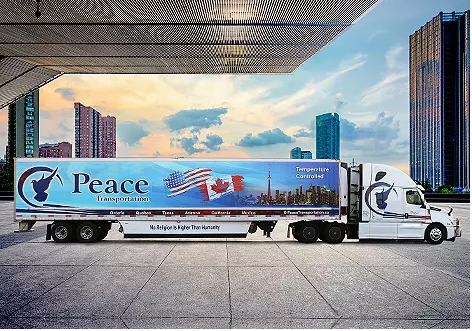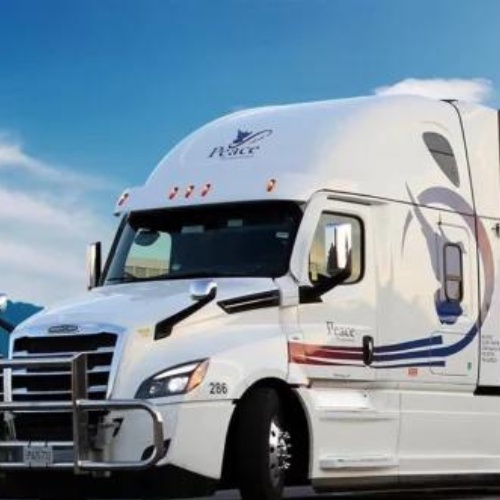Introduction
Transportation is an essential part of Canada's economy and society, and the safe and efficient movement of people and goods across the country is critical for its success. The Canadian transportation system is composed of different modes, including road, air, rail, and marine. Transport Canada is the federal agency responsible for overseeing and regulating these modes of transportation. This article provides an overview of Transport Canada and its role in Canada's transportation system.
Transport Canada: A Brief History:
Transport Canada was created in 1935 as the Department of Transport, which was responsible for overseeing all transportation activities in Canada. The department's responsibilities included the construction and maintenance of transportation infrastructure, such as airports and highways, as well as the regulation of transportation activities. In 1987, the Department of Transport was renamed Transport Canada, and its mandate was expanded to include transportation policy development and coordination.

Transport Canada's Role in Canada's Transportation System
Transport Canada plays a critical role in ensuring the safety and efficiency of Canada's transportation system. Its responsibilities include:
-
Developing transportation policies: Transport Canada develops policies and strategies that support the safe, efficient, and sustainable movement of people and goods in Canada. These policies cover all modes of transportation, including road, air, rail, and marine.
-
Regulating transportation activities: Transport Canada is responsible for regulating the activities of the transportation industry to ensure that they operate safely and efficiently. This includes the regulation of transportation infrastructure, vehicles, and operators.
-
Investing in transportation infrastructure: Transport Canada invests in transportation infrastructure, such as airports and highways, to improve the safety and efficiency of the transportation system.
-
Providing funding for transportation projects: Transport Canada provides funding for transportation projects across Canada, including those related to public transit, active transportation, and sustainable transportation.
-
Conducting research and development: Transport Canada conducts research and development to support the safe and efficient operation of Canada's transportation system. This includes research on new transportation technologies, safety regulations, and environmental sustainability.
Transport Canada's Organizational Structure
Transport Canada is divided into several branches, each with specific responsibilities. These branches include:
-
Air Branch: responsible for regulating the aviation industry, including airports, airlines, and aircraft operators.
-
Marine Branch: responsible for regulating the marine industry, including ports, shipping, and vessel operators.
-
Rail Safety Branch: responsible for regulating the rail industry, including railway companies, railway infrastructure, and railway operators.
-
Surface Transportation Policy Branch: responsible for developing transportation policies and strategies related to road and public transit.
-
Transportation of Dangerous Goods Directorate: responsible for developing and enforcing regulations related to the transportation of dangerous goods.
Transport Canada's Role in Aviation: Transport Canada's Air Branch is responsible for regulating the aviation industry in Canada. This includes the regulation of airports, airlines, and aircraft operators. The Air Branch also oversees the development of new aviation technologies and the implementation of safety regulations.
Transport Canada's role in aviation includes:
-
Safety oversight: Transport Canada ensures that aviation operators meet the highest safety standards through rigorous inspections, audits, and certifications.
-
Licensing and certification: Transport Canada issues licenses and certifications to pilots, air traffic controllers, and aviation maintenance engineers to ensure that they meet the required training and competency standards.
-
Air traffic management: Transport Canada manages air traffic in Canadian airspace to ensure safe and efficient movement of aircraft.
-
Environmental sustainability: Transport Canada promotes the use of sustainable aviation fuels and supports research on reducing aviation emissions.
Transport Canada's Role in Marine Transportation: Transport Canada's Marine Branch is responsible for regulating the marine industry in Canada. This includes the regulation of ports, shipping, and vessel operators.
Responsibilities of Transport Canada
-
Safety and Security: Transport Canada is responsible for ensuring the safety and security of all modes of transportation in Canada, including aviation, marine, rail, and road. The organization sets safety and security standards, conducts inspections and audits, and investigates accidents and incidents.
-
Regulation: Transport Canada regulates all aspects of transportation in Canada, including vehicle and equipment standards, transportation services, and infrastructure development. The organization also regulates the licensing of transportation professionals, such as pilots, ship captains, and truck drivers.
-
Infrastructure Development: Transport Canada is responsible for the development and maintenance of the country's transportation infrastructure, including airports, ports, and highways. The organization works with other government agencies, the private sector, and stakeholders to plan, design, and build transportation infrastructure that meets the needs of Canadians.
-
Environmental Sustainability: Transport Canada plays a key role in promoting environmental sustainability in transportation. The organization develops policies and programs to reduce the environmental impact of transportation, including reducing greenhouse gas emissions, improving energy efficiency, and promoting alternative transportation modes.
-
International Relations: Transport Canada is responsible for representing Canada in international transportation forums and negotiations. The organization works with other countries and international organizations to develop global transportation standards and regulations that benefit Canadians.
Transportation is a critical component of modern society, enabling the movement of people, goods, and services across vast distances. In Canada, transportation plays a significant role in the country's economy and the daily lives of its citizens. The organization responsible for overseeing and regulating the country's transportation systems is Transport Canada. In this article, we will explore the history, responsibilities, and current initiatives of Transport Canada, along with the importance of the organization for the Canadian transportation system.
Current Initiatives of Transport Canada
Transport Canada is continuously working to improve the safety, security, and sustainability of the Canadian transportation system. Some of the current initiatives of the organization include:
-
Drones and Unmanned Aircraft Systems (UAS): Transport Canada is leading efforts to regulate the use of drones and UAS in Canada. The organization has developed regulations for the safe and responsible use of drones and is working with industry stakeholders to promote the development of new technologies and applications.
-
Autonomous Vehicles: Transport Canada is also leading efforts to regulate the use of autonomous vehicles in Canada. The organization is working with industry stakeholders to develop safety standards and regulations for the testing and deployment of autonomous vehicles on Canadian roads.
-
Climate Change: Transport Canada is committed to addressing the challenges of climate change in transportation. The organization is developing policies and programs to reduce greenhouse gas emissions from transportation, promote energy efficiency, and encourage the use of alternative transportation modes.
Read more


No comments yet